Michigan chestnut crop report for the week of May 17, 2021
Temperatures are warming and conditions remain dry across much of the state.

Weather
There will be continuation of dry, warm conditions across much of Michigan. Temperatures are likely to be 20 degrees Fahrenheit above normal this week and into the weekend. Lack of moisture will likely be an issue, except perhaps in the Upper Peninsula and portions of northwest Michigan.
Watch the most recent agricultural weather forecast from Michigan State University state climatologist Jeff Andresen.
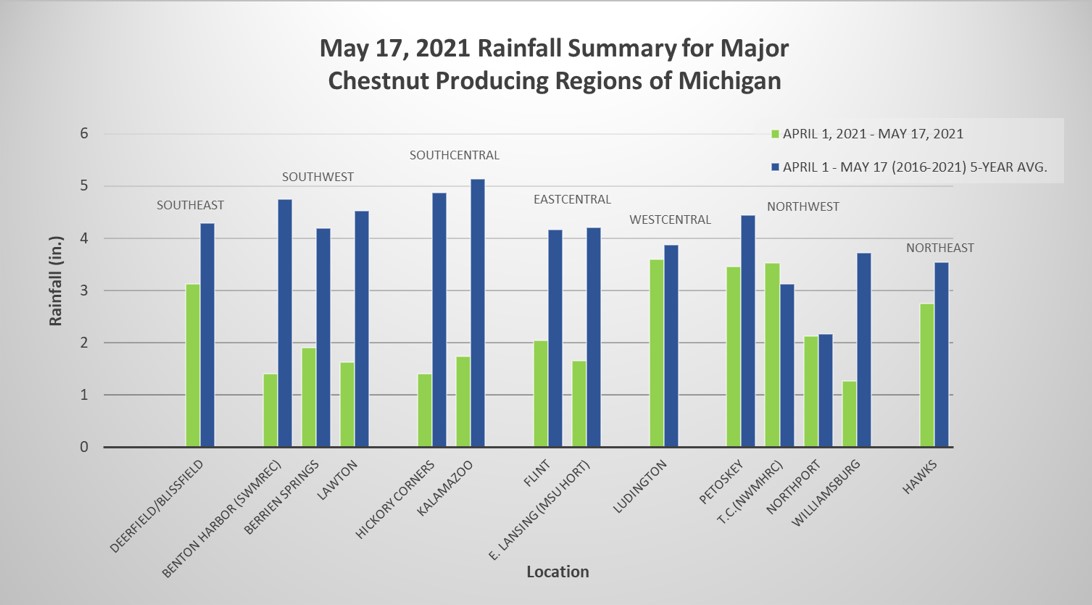
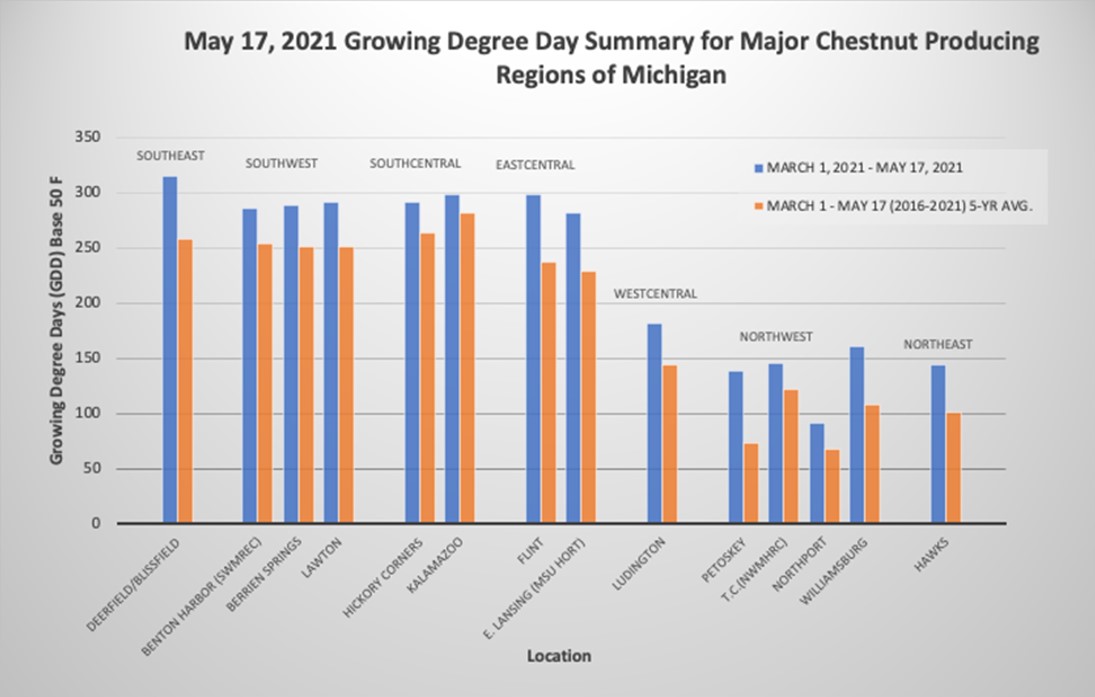
Crop development
Tree development around the state varies from budswell in central northern Michigan to leaf expansion in the southern portion of the state. Plant available soil moisture in the top 3 feet is 20-35% of normal across most of the state. With water deficits widespread, growers should be getting irrigation or supplemental watering plans in place for small trees with limited root area. Water demands will ramp up as leaves expand and temperatures warm.
If dry conditions persist, monitor soil moisture and irrigate or water young trees on sandy sites every 10 days by saturating the soil profile around the root zone. However, chestnut trees do not tolerate prolonged periods of wet roots, so ample time for water to percolate and drain from the soil profile between waterings is important. Trees on heavier ground will require less frequent watering and should be carefully monitored via soil moisture monitoring methods to prevent overwatering.
Northwest Michigan
Observed cultivars are at the bud break and early leaf expansion stage.
West central Michigan
Observed cultivars are at bud break and early leaf expansion.
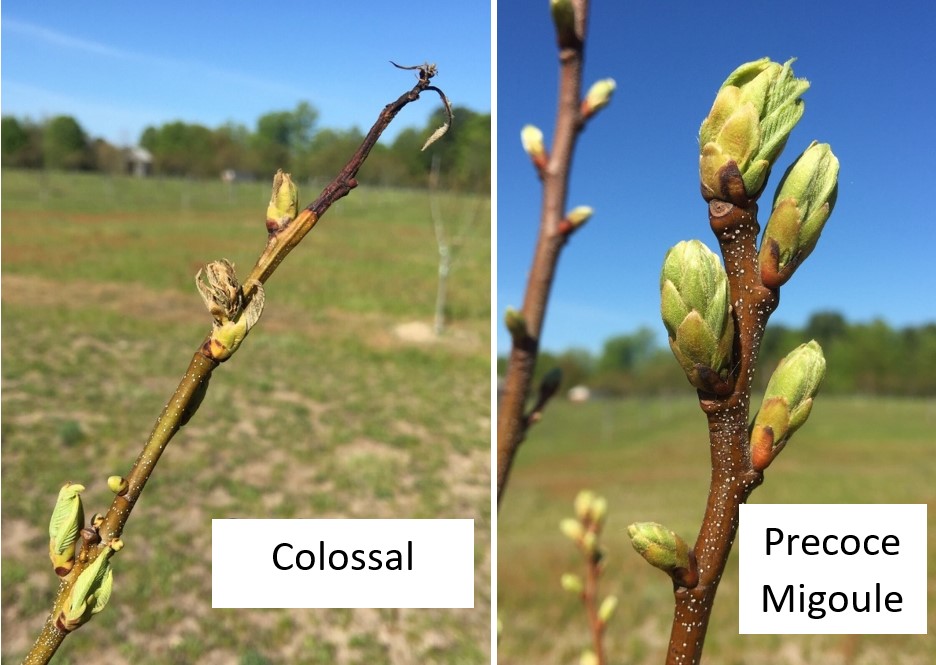
Southern Michigan
Observed cultivars are at leaf expansion.
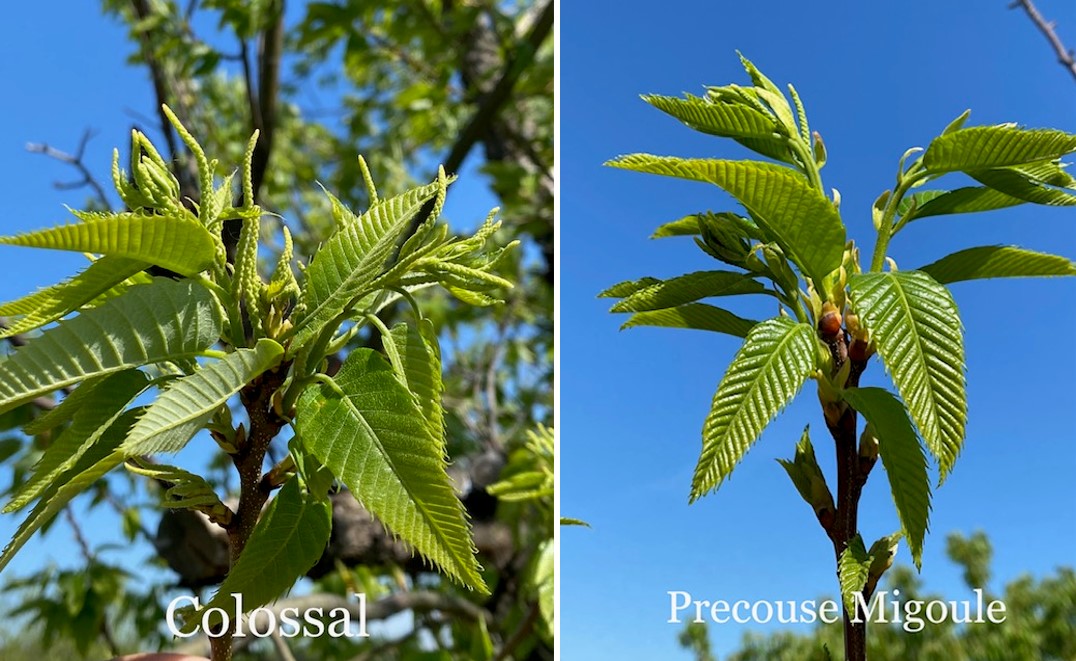
Fertility
Granular fertilizers should be applied in the spring and early summer. Splitting nutrient applications is recommended, with one application well before bud break and another during leaf expansion (at least two weeks apart, preferably four weeks). Trees that were pruned hard this past winter should receive less nitrogen to prevent excessive terminal growth.
As a reminder, for nutrient management considerations, please reference pages 5-7 of the 2021 Michigan Chestnut Management Guide or the Nutrient Management section of the MSU Extension Chestnut website. Also, MSU recommends submitting soil samples each spring around the same time. Please refer to lab sampling and submission instructions prior to sending in samples.
Soil testing labs
Comprehensive soil health testing labs
Insects
Black stem borer, also known as ambrosia beetle, continue to emerge and can damage young orchards. Emergence typically begins in early April, peaks in late May and tapers off by the end of June. Refer to the MSU Extension article, “Black stem borer: An opportunistic pest of young fruit trees under stress” for more information on biology, monitoring and management.
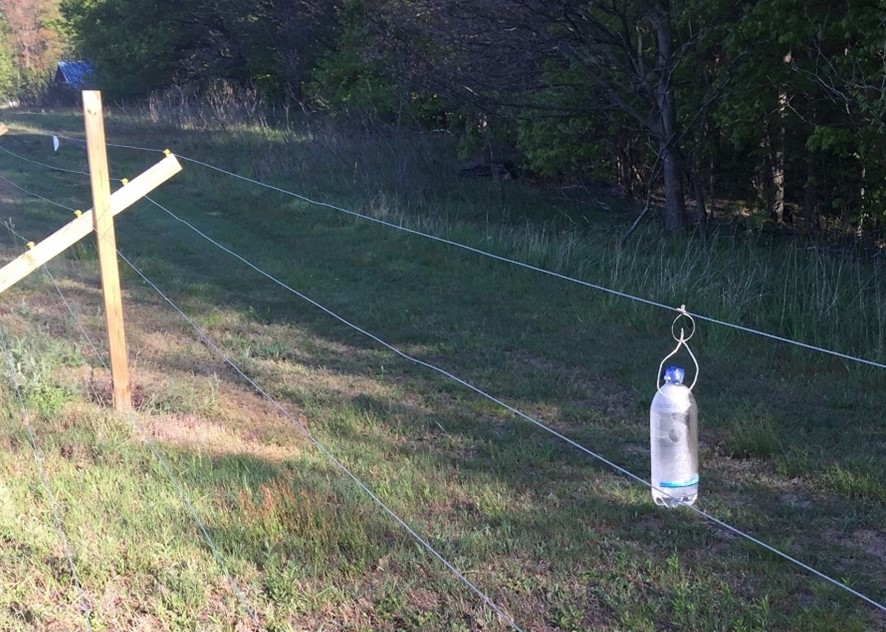
Disease
Existing chestnut blight infections (caused by Cryphonectria parasitica) can be observed at this time. To learn more about chestnut blight, visit the Pest Management section of the Chestnuts website.
Join us Wednesday, May 26, for the MSU 2021 Chestnut Chat Series as we welcome Monique Sakalidis and Carmen Median-Mora of MSU to discuss chestnut blight management.
Weeds
Spring conditions are ideal for controlling weeds under the tree canopy with herbicides. Herbicides are most effective when applied to small weeds.
Stay connected
For more information on chestnut production, visit MSU Extension Chestnuts and sign up to receive our newsletter. Also, join us for the 2021 Chestnut Chat Series every Wednesday at 12 p.m. from May 5 through Sept. 8, 2021. This series of interactive Zoom meetings will allow easy communication between producers and MSU faculty. These informal weekly sessions will include crop and pest updates from Rob Sirrine and Erin Lizotte. In addition, MSU faculty will drop in to address timely issues and provide research project updates. Bring your field notes too! We want to hear what’s going on in your orchard.
This material is based upon work supported by the National Institute of Food and Agriculture, U.S. Department of Agriculture, under Agreement No. 2017-70006-27175. Any opinions, findings, conclusions, or recommendations expressed in this publication are those of the author(s) and do not necessarily reflect the view of the U.S. Department of Agriculture.



 Print
Print Email
Email


